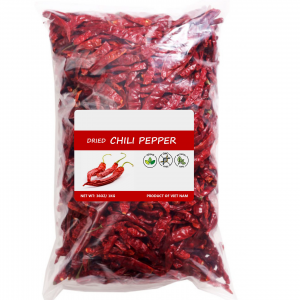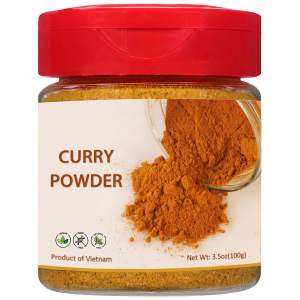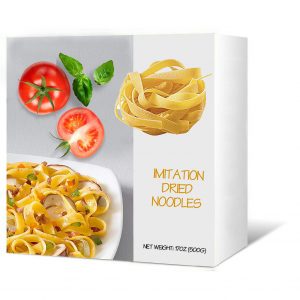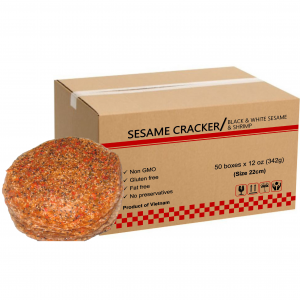FLAT RICE NOODLES
Item detail
Product description: FLAT RICE NOODLES
Product number: 3106
Packaging: Customized packaging
I. Introduction
Noodles is one of the world’s most accessible foods. Nearly every country has its own unique version of this popular, inexpensive staple.
There are many stories about the origin of noodles and the history of noodles is difficult to trace for several reasons. This is a reference to the dough, made from a combination of flour and water or eggs – all simple components that have been around for centuries.
There are thousands of varieties of noodles around the world, according to the classification of the shape of noodles, seasoning gravy, cooking craft, and so on. Many noodles have local characteristics, noodles also represent innovation, history and flavor, It reflects the cultural traditions and customs of many local diets: Mediterranean, Asian and Latin American. Since noodles has long been a food of the common people, noodles are accepted by people from all over the world – one of the most popular foods on the planet!
HBMfood was born of a vision of combining simple, fresh and seasonal ingredients to create an unforgettable culinary experiences.
Our noodles is produced with the best grains and ingredients coming from organic agriculture. It’s completely free from pesticide, GMOs and whatever is artificial. Only 100% Natural noodles. The slow drying process prevents the loss of proteins and flavour, rich in proteins and fibers.
We pride ourself in sourcing only the best ingredients from local producers & marrying them with authentic Vietnamese flavors, bringing your guests an unforgettable dining experience.
Thanks to our commitment to preserve the Vietnamese authentic tradition of noodles, we provide a top quality product to our customers.
Ingredients: Rice flour, tapioca starch and salt.
Storage: Keep in a cool, dry place, avoid direct sunlight.
II. How to eat
- Serve noodles in broth with other ingredients.
- Serve noodles accompanying sauce or soup.
- Noodles are also served in a salad.
- Serve the noodles pain or with dipping sauce or oil added to table.
- Stir fry noodles with various seafood, meats, dairy products and vegetables.
- In Far Eastern cuisine, noodles are used to accompany sauces, soups and stir fried dishes.
III. Are you interested in private labeling?
- Contact us, select your product and create your own private label.
- You can choose from the following lines: Noodles and macaroni.
- Make your products unique while respecting the environment: Choose your packaging with our different formats and 100% recyclable materials.
- Our graphic team can assist you with the creation of your brand with a captivating and eye-catching packaging, which will help your business grow, while respecting the norms and regulations of your country.
**Traditional Vietnamese Chicken Pho (Pho Ga)
The history of pho
Pho originates from a city called Nam Dinh, but many people associate its origins to Hanoi. At the end of the 19th century during French colonism, the high demand for beef led to an excess of beef bones. This led to the Vietnamese, specifically in Hanoi, to perfect the Nam Dinh broth using those bones. This is how the pho broth came to be. Pho gained popularity over the years and now there are different versions depending on where you are in Vietnam. In the North where pho originated, the bowl of pho you get has a few simple toppings. In the South, the pho has a variety of toppings with a sweeter broth.
What is the difference between beef and chicken pho?
The obvious difference between the two types of pho are the use of chicken vs beef to make the broth. We find that the use of chicken creates for a lighter, less rich broth than beef. The other differences are the herbs used and the addition of dried scallops in chicken pho. In beef pho, we used a combination of coriander seeds, fennel seeds, star anise, and cinnamon, but in chicken pho, we used only coriander seeds and fennel seeds. The reason for the switch up is we didn’t feel the star anise and cinnamon would pair well with the lighter flavor of chicken.
1. Ingredients
Broth Ingredients
- 1 yellow onion halved
- 1 ginger halved
- 2 tsp coriander seeds
- 2 tsp fennel seeds
- 1 chicken 3/4 pound
- 1 daikon
- 2 tsp salt
- 1 cup chicken broth
- 5 dried scallops optional
Finishing Touches
- 1 package pho noodles
- 2 stalks green onions
- 2 tbsp cilantro minced
- ¼ cup fried shallots
- fish sauce to taste
2. How To Make Traditional Vietnamese Chicken Pho (Pho Ga)
- Clean the dried scallops.Add the dried scallops into a bowl of water and let sit for at least 10 minutes. The water will clean out the dried scallops.
- Roast the onion and ginger.Preheat the oven to broil. Broil the yellow onion and ginger root for 10-15 minutes until you see charred edges on both.
- Make the herb bundle.Toast the coriander seeds and fennel seeds on the stove in a small pan for 1-3 minutes until you smell a toasty aroma. Add to a cheese cloth and tie it tight with some butchers twine.
- Par boil the chicken to clean it.Add chicken to a large soup pot and cover with water until it just covers the chicken. Bring to a boil. After it boils, remove the chicken and pour out the water. This allows you to clean the chicken and obtain a clean broth.
- Make the broth. Now you are ready to make the broth! Add the chicken back to the soup pot and cover with fresh water until it just covers it. Add in the roasted onion, ginger, dried scallops, daikon, and herb bundle. Bring to a boil and then lower to a simmer. Simmer for 30 minutes.
- After it has simmered for 30 minutes, take out the chicken and rest the meat about 10 minutes or until it is cool enough to handle. Continue simmering the broth while you are waiting. Once the chicken is cool enough to handle, shred all the meat. Add the bones back to the soup to cook further. Add the chicken broth and simmer for another 2.5 hours. Taste the broth to make sure it is seasoned to your tastes. If it tastes bland, add more salt.
- Once the soup has finished cooking, remove your solids, and strain it through a fine mesh sieve into another soup pot. The purpose of this is to get the cleanest broth possible by removing any small solids in the soup.
- Make your green onion and cilantro toppings.While the soup simmers, mince your green onions and cilantro. Set them aside in the fridge while you wait for your soup to finish.
- Boil the noodles.When you have about 10 minutes left in simmering time, cook your noodles. If using fresh noodles, cook in boiling water for 2-3 minutes, and if using dried noodles, cook in boiling water for 5-10 minutes.
- Putting it all together.Once the soup has finished cooking, add some noodles, shredded chicken, minced green onion, minced cilantro, fried shallots, and a dash of fish sauce (optional) to a bowl. Ladle soup over the top and serve.












Reviews
There are no reviews yet.